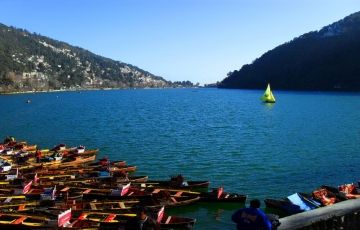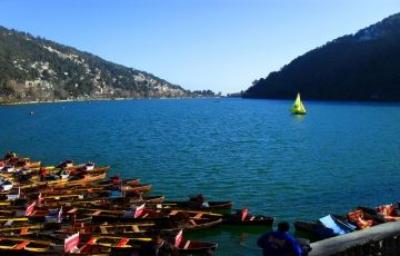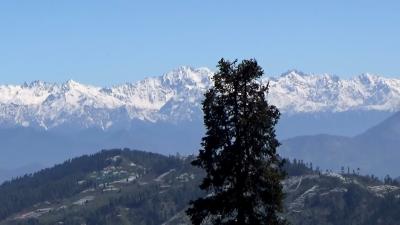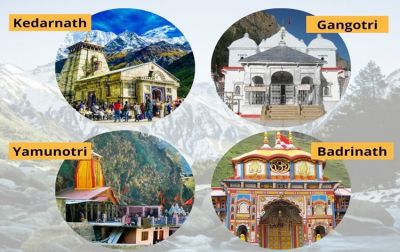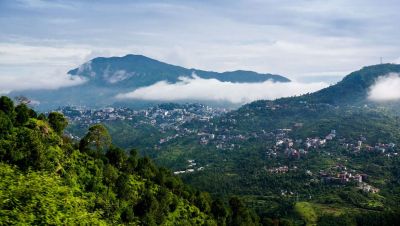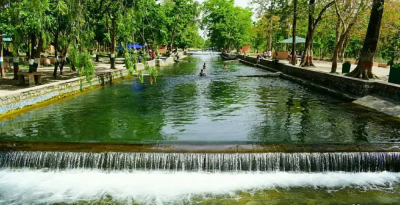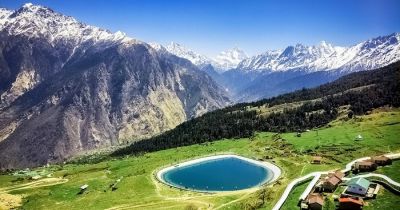Discovering the Mythical Sources of Uttarakhand's Sacred Rivers
Uttarakhand, often referred to as the "Land of the Gods," is a stunningly beautiful state in northern India. Nestled in the lap of the Himalayas, this land is not only known for its breathtaking landscapes and serene surroundings but is also considered the abode of several sacred rivers that hold immense religious and mythological significance. These rivers, believed to be the lifelines of Uttarakhand, are a source of spiritual awakening and an integral part of the state's cultural fabric.
The Sacred Rivers of Uttarakhand
Uttarakhand is blessed with several sacred rivers that originate from the glaciers and snow-clad peaks of the mighty Himalayas. These rivers flow through the picturesque valleys and gorges, nourishing the land and the souls of the people residing there.
1. Ganga River:
The Ganges, or Ganga, holds a special place in the hearts of millions of Indians. It is not only the holiest river in the country but also one of the most revered rivers in the entire world. The Ganga originates from the Gangotri glacier, located in Uttarakhand's Garhwal region. This mythical river is considered to be the embodiment of the Hindu goddess Ganga, descending from the heavens to cleanse the sins of humanity. Devotees from all corners of the country flock to Haridwar and Rishikesh, two prominent cities in Uttarakhand, to take a dip in the holy waters of the Ganga and seek spiritual solace.
2. Yamuna River:
The Yamuna River, another significant river in Hindu mythology, is a tributary of the Ganges. It also originates from the Yamunotri glacier in Uttarakhand. According to ancient Hindu scriptures, the Yamuna is believed to be the sister of Yama, the god of death. Bathing in the Yamuna River is said to cleanse one's soul and help attain moksha, or liberation from the cycle of birth and death. The town of Yamunotri, located at the source of the river, is revered as one of the Char Dhams (Four Holy Abodes) in Hinduism.
3. Alaknanda and Bhagirathi Rivers:
The Alaknanda River and the Bhagirathi River, both originating from separate glaciers, merge at the confluence of Devprayag to form the river Ganga. Alaknanda originates from the Satopanth Glacier, while Bhagirathi originates from the Gangotri Glacier. These rivers hold immense religious significance and are also popular among adventure enthusiasts for river rafting and other water activities.
4. Mandakini River:
The Mandakini River, also known as the Kedarnath River, is a tributary of the Alaknanda River. It originates from the Chorabari Glacier, near the Kedarnath temple, which is one of the twelve Jyotirlingas (manifestations of Lord Shiva) in India. The Mandakini River is considered sacred, and it is believed that Lord Shiva himself sanctified its waters by immersing his feet in it.
5. Pindar River:
The Pindar River, originating from the Pindari Glacier, is yet another significant river in Uttarakhand. It is named after the Pandava brothers from the Hindu epic Mahabharata, as it is believed that they reached heaven (Swarga) through this river.
Mythological Significance and Rituals
These sacred rivers of Uttarakhand are not only revered for their natural beauty but are also deeply intertwined with mythology and ancient rituals. According to Hindu beliefs, taking a dip in these sacred rivers purifies the soul and washes away sins. Pilgrims from all walks of life visit Uttarakhand to partake in various religious ceremonies and rituals performed on the banks of these rivers.
From the Ganga Aarti (ceremonial worship of the Ganges) performed every evening in Haridwar to the Yamuna Aarti in Mathura and the Kedarnath Yatra (pilgrimage to Kedarnath temple), these rivers attract devotees seeking spiritual enlightenment, blessings, and redemption.
Conservation Efforts and Challenges
While these sacred rivers hold great religious and cultural significance, they are also facing numerous challenges, mainly due to human activities. The rapid growth of population and unchecked urbanization has led to pollution and encroachments on the riverbanks. Additionally, the construction of dams and hydropower projects poses a threat to the delicate ecological balance of these rivers.
However, realizing the importance of preserving these rivers, the government and various environmental organizations have launched several initiatives for their conservation. Efforts are being made to raise awareness among the local communities about the need to protect these rivers and maintain their sanctity.
Conclusion
Uttarakhand's sacred rivers are not just sources of water but are revered as deities themselves. They hold immense religious significance and are an integral part of the cultural heritage of the region. As visitors, it is our responsibility to respect and cherish these rivers and contribute towards their conservation. By doing so, we not only preserve the natural beauty of Uttarakhand but also ensure that future generations can experience the spiritual and mythological connection these rivers offer.
So, if you are planning a trip to Uttarakhand, don't forget to explore the source areas of these mythical rivers and rejoice in the divine ambiance they possess.
Feel free to share this blog post with fellow travel enthusiasts and spiritual seekers to spread the word about the sacred rivers of Uttarakhand!
Disclaimer : The information provided in this blog is for general informational purposes only. While we strive to keep the content accurate and updated, TravelSetu assumes no liability for errors or omissions. If you believe any part of this blog infringes your rights or causes concern, please notify us immediately at info[at]travelsetu[dot]com so that appropriate action can be taken.

